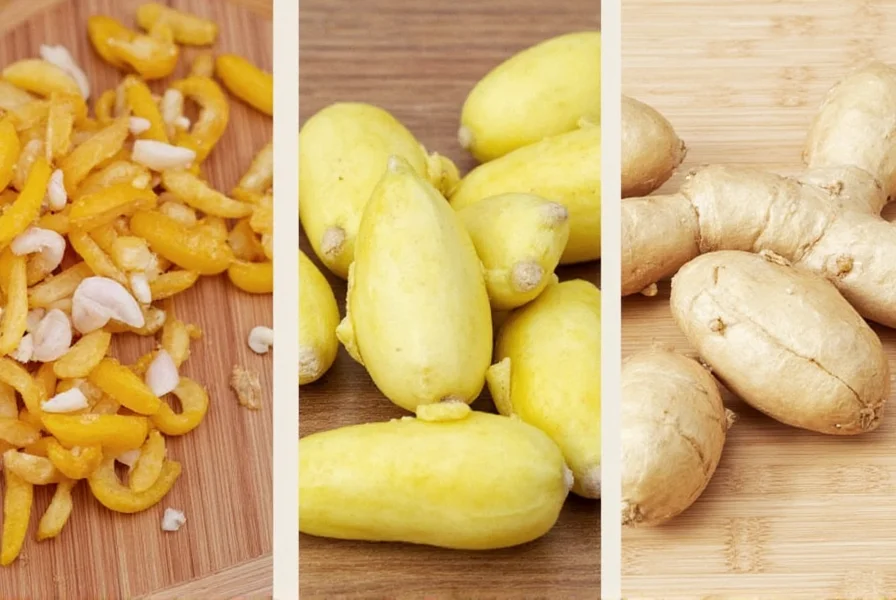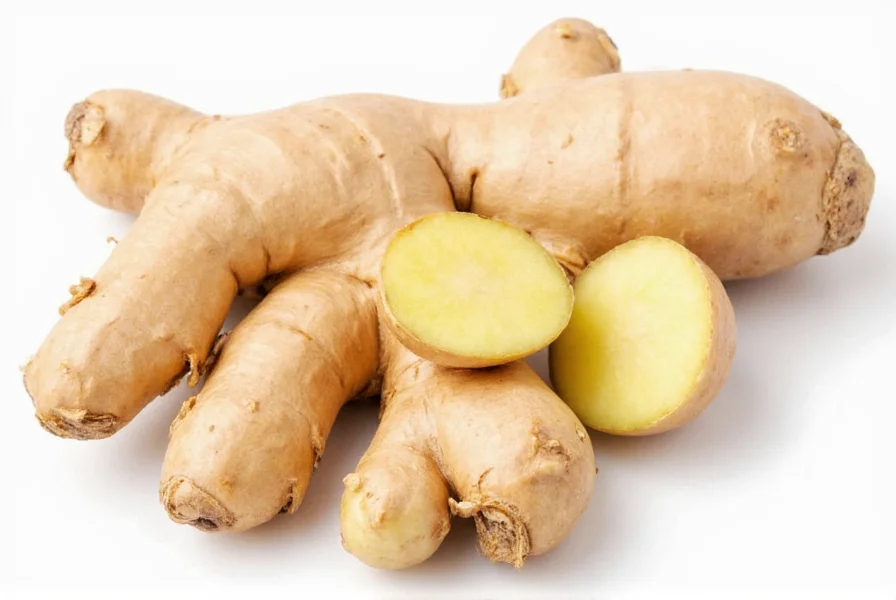Understanding how to use ginger effectively transforms this versatile root from a simple spice into a culinary powerhouse and natural remedy. Whether you're a home cook looking to elevate your dishes or someone seeking natural wellness solutions, mastering ginger preparation unlocks its full potential.
Understanding Ginger Forms and Their Best Uses
Ginger comes in multiple forms, each suited for specific applications. Fresh ginger offers the most vibrant flavor and active compounds, while dried and powdered forms provide convenience and longer shelf life. Knowing which form to use prevents wasted ingredients and ensures optimal results in your recipes or remedies.
| Ginger Form | Preparation Method | Best Applications | Storage Duration |
|---|---|---|---|
| Fresh root | Peel with spoon, mince or grate | Stir-fries, marinades, fresh juices | 3 weeks refrigerated |
| Ground powder | Add directly to dry ingredients | Baking, spice blends, rubs | 2-3 years in cool, dark place |
| Candied | Chop or use whole pieces | Desserts, tea infusions, snacks | 6 months refrigerated |
| Ginger juice | Extract using juicer or grater | Cocktails, dressings, wellness shots | 1 week refrigerated |
Preparing Fresh Ginger: Step-by-Step Techniques
Proper preparation maximizes ginger's flavor and potency while minimizing waste. The traditional knife-peeling method often removes too much edible flesh. Instead, use the edge of a spoon to gently scrape away the thin skin—a technique particularly effective for wrinkled or irregularly shaped roots. This method preserves more of the valuable ginger flesh while removing only the papery skin.
For fine applications like dressings or marinades, microplane grating releases maximum flavor compounds. When making ginger tea, slice rather than boil the root to preserve volatile oils that provide digestive benefits. Chefs preparing Asian cuisine often use the " smashed ginger " technique—crushing a peeled knob with the side of a knife—to release flavors without adding fibrous pieces to dishes.
Culinary Applications: Beyond Basic Recipes
Mastering how to use ginger in cooking requires understanding its flavor transformation at different temperatures. Raw ginger provides bright, citrusy notes ideal for cold dishes and fresh salsas. When cooked briefly, it develops warm, spicy-sweet characteristics perfect for stir-fries. Prolonged cooking creates deeper, more complex flavors suitable for braises and stews.
Professional chefs often employ the " ginger water " technique for delicate dishes: simmer ginger slices in water for 10 minutes, then use this infused liquid instead of plain water in recipes to incorporate subtle flavor without texture. For baking applications, combine ground ginger with complementary spices like cardamom and black pepper to enhance bioavailability of active compounds.
Medicinal Uses with Scientific Backing
Research supports specific methods for using ginger medicinally. For motion sickness prevention, consume 1 gram of fresh ginger (about a 1/2 inch slice) 30 minutes before travel. The most effective preparation for nausea relief involves steeping freshly grated ginger in hot (not boiling) water for exactly 10 minutes—boiling degrades key compounds like gingerols.
Studies show that consuming ginger with black pepper increases absorption of its active components by up to 30%. For joint pain relief, topical applications work best when combined with carrier oils like coconut oil, applied with gentle massage to affected areas. Always remember that medicinal use differs from culinary use—consult healthcare providers for therapeutic applications, especially if managing chronic conditions.
Storage Methods to Maintain Potency
Preserving ginger's potency requires proper storage techniques specific to each form. Store unpeeled fresh ginger root in an airtight container in the refrigerator's crisper drawer, where it maintains quality for up to three weeks. For longer storage, freeze whole or sliced ginger—frozen ginger can be grated directly without thawing.
Powdered ginger loses potency rapidly when exposed to air. Transfer store-bought ginger powder to an opaque, airtight container and store in a cool, dark cupboard. Add a silica packet to absorb moisture and extend shelf life. Properly stored, high-quality ginger powder maintains medicinal properties for 18-24 months, though flavor begins diminishing after 12 months.
Safety Considerations and Interactions
While generally safe, ginger requires caution in specific situations. Consuming more than 4 grams daily may cause heartburn or interact with blood-thinning medications. Pregnant women should limit intake to 1 gram daily during the first trimester. Those with gallstone conditions should consult physicians before regular consumption, as ginger stimulates bile production.
When using ginger medicinally alongside prescription medications, particularly for diabetes management or blood pressure control, monitor your response carefully. Ginger's natural compounds can enhance medication effects, potentially requiring dosage adjustments under medical supervision. Always disclose ginger use to your healthcare provider during consultations.
Creative Daily Incorporation Methods
Incorporating ginger into your daily routine doesn't require dramatic changes. Add a thin slice to your morning water bottle for subtle flavor and digestive benefits throughout the day. When making smoothies, include a 1/2 inch piece of frozen ginger for anti-inflammatory properties without overpowering flavor.
For those sensitive to strong ginger taste, try the " ginger honey " method: slice ginger thinly, cover with raw honey, and let sit for 24 hours. The resulting infused honey provides gentle ginger benefits with pleasant sweetness. Another approach is adding ground ginger to your coffee grounds before brewing—a technique that creates a warming, digestion-friendly morning beverage.

Frequently Asked Questions
What's the best way to peel ginger without wasting flesh?
The most efficient method uses a spoon: hold the ginger root firmly and scrape the edge of a regular teaspoon against the skin. This technique follows the root's natural contours, removing only the thin papery skin while preserving maximum edible flesh. It works particularly well for knobby or irregularly shaped ginger pieces that are difficult to peel with traditional peelers.
How much ginger should I use for nausea relief?
For nausea relief, research supports consuming 1-2 grams of fresh ginger (approximately a 1-inch piece) 20-30 minutes before potential symptoms. When making ginger tea, use 2 tablespoons of freshly grated ginger steeped in 8 ounces of hot (not boiling) water for 10 minutes. Do not exceed 4 grams total daily without medical supervision, as higher amounts may cause digestive discomfort.
Can I substitute ground ginger for fresh in recipes?
Yes, but with important adjustments: use 1/4 teaspoon of ground ginger for every 1 tablespoon of fresh grated ginger. Remember that ground ginger has a more concentrated, earthy flavor compared to fresh ginger's bright, citrusy notes. For best results in baking, combine ground ginger with a pinch of black pepper to enhance bioavailability. In savory dishes requiring fresh ginger's texture, ground ginger won't provide the same mouthfeel.
How do I prevent ginger from burning when stir-frying?
Add ginger to hot oil for just 15-20 seconds before other ingredients—this releases flavor without burning. Professional chefs often use the " water bloom " technique: add a tablespoon of water immediately after ginger hits the oil, creating steam that cooks the ginger gently while preventing scorching. Always cut ginger into uniform pieces for even cooking, and never leave the wok unattended during this critical step.
What's the most effective way to store fresh ginger long-term?
For maximum longevity, store unpeeled ginger root in an airtight container in the refrigerator's crisper drawer, where it maintains quality for 3-4 weeks. For extended storage up to six months, freeze whole or sliced ginger in a freezer bag with all air removed. Frozen ginger can be grated directly without thawing—simply run the frozen piece under cool water for 10 seconds to remove surface frost before grating.











 浙公网安备
33010002000092号
浙公网安备
33010002000092号 浙B2-20120091-4
浙B2-20120091-4